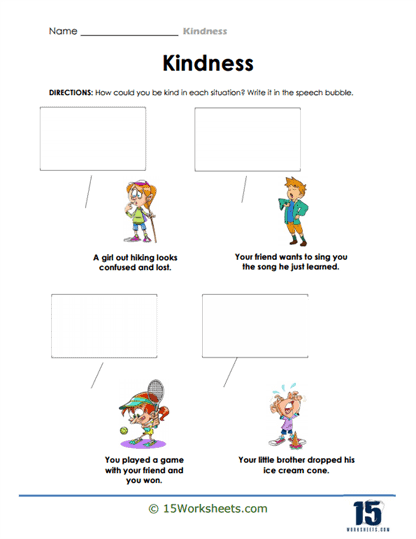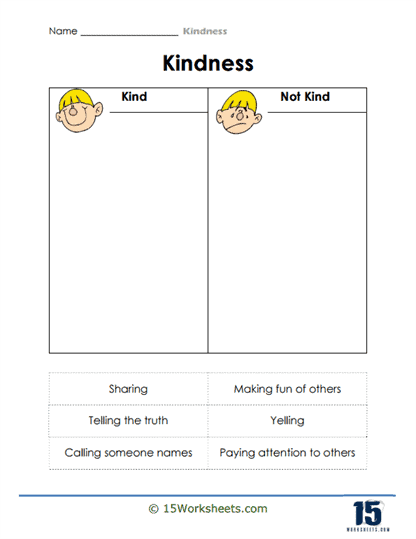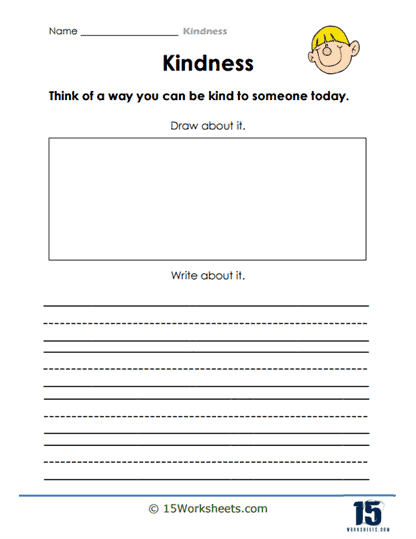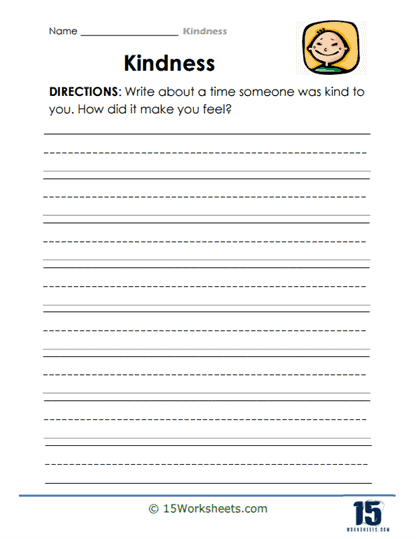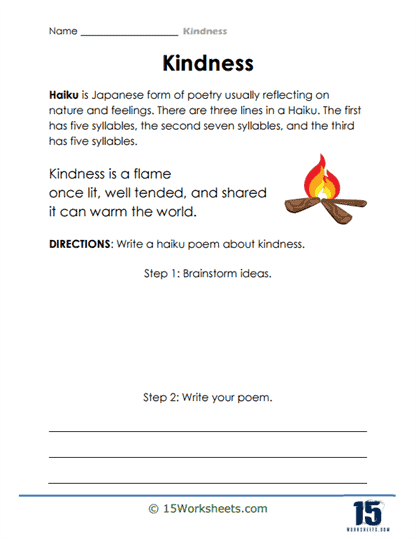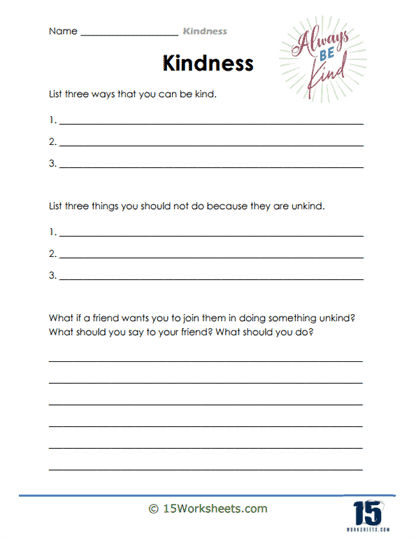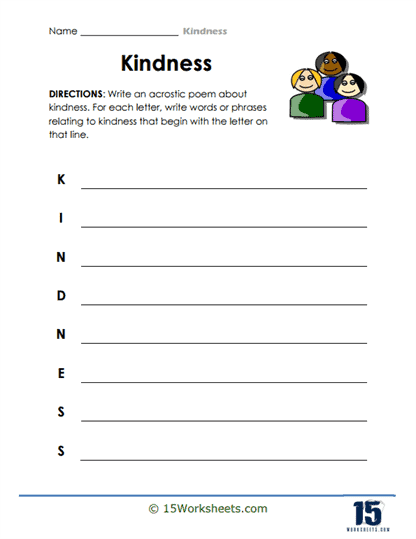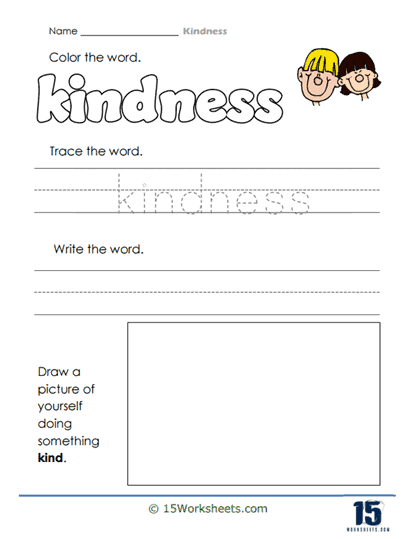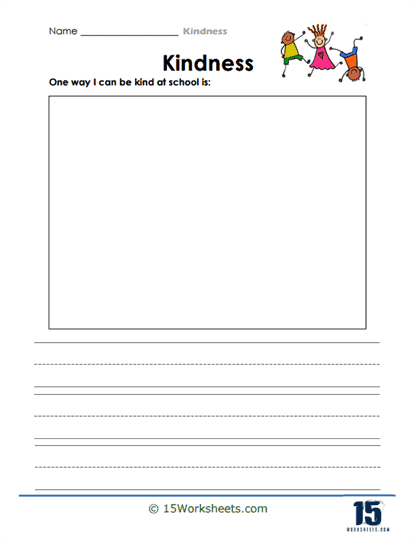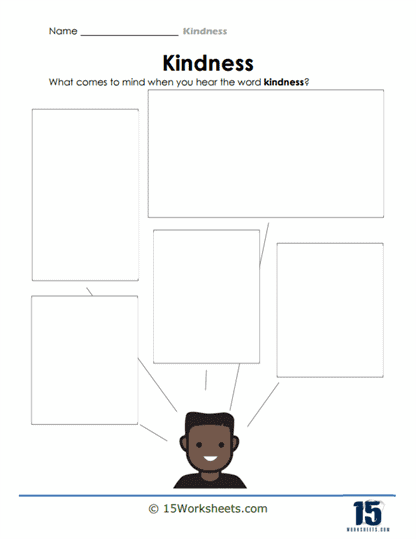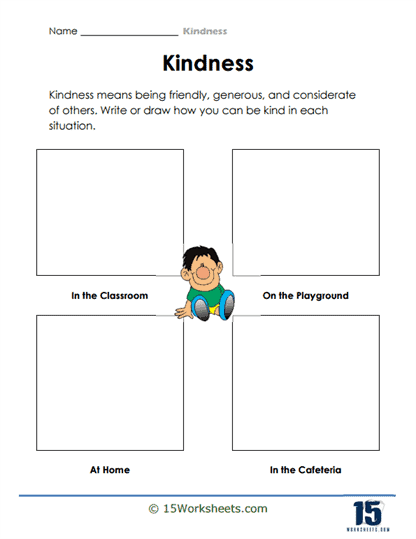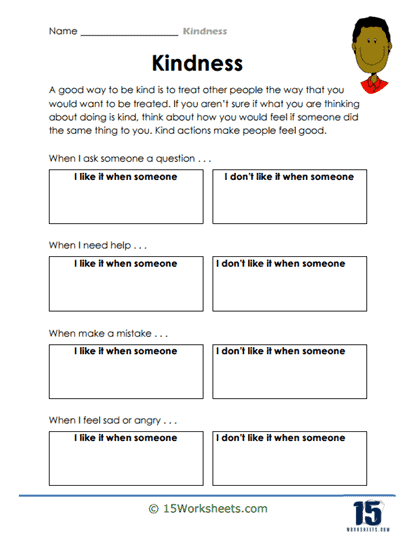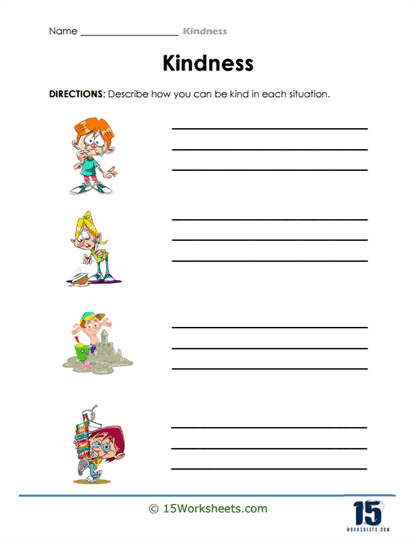Kindness Worksheets
About These 15 Worksheets
This worksheet collection is a thoughtfully designed set of activities aimed at helping students understand and practice kindness in various aspects of their lives. These worksheets are perfect for use in classrooms, homeschools, or at home to foster an environment where kindness is encouraged and valued. The activities are crafted to be engaging, educational, and suitable for students of varying age groups, making them versatile tools for teachers and parents alike.
One of the core activities in this collection involves identifying acts of kindness. For example, students are provided with a list of actions, both kind and unkind, and are asked to check off those that exemplify kindness. This simple yet powerful exercise helps students differentiate between positive and negative behaviors, reinforcing the importance of actions like saying “please” and “thank you,” helping someone in need, and waiting their turn. Another worksheet in the collection asks students to match actions to their corresponding descriptions, further reinforcing the concept of kindness through critical thinking and visual association.
In addition to identification activities, the collection includes creative exercises such as writing haiku poems about kindness. This activity not only helps students express their understanding of kindness in a poetic format but also hones their creative writing skills. Writing a haiku requires students to think deeply about the essence of kindness, and the structured format of the poem encourages thoughtful word choices. Another creative activity involves students writing acrostic poems, where each letter in the word “kindness” starts a new line that expresses a positive attribute or action related to kindness. These exercises allow students to reflect on kindness in a more abstract and personal way, connecting the concept to their own experiences and feelings.
Role-playing scenarios are also a vital part of this collection. In these worksheets, students are presented with different situations where they must describe or act out how they would show kindness. For instance, they might be asked how they would respond if a friend drops their ice cream or if a new student looks lost on their first day. These scenarios are designed to be relatable and to encourage empathy, allowing students to practice kind behavior in a controlled, reflective setting. By writing their responses in speech bubbles or completing short answer prompts, students are guided to think through their actions and the impact they can have on others.
To complement these activities, the collection includes worksheets that challenge students to think about kindness from different perspectives. One such activity asks students to think about how they feel when someone is kind or unkind to them, encouraging them to reflect on the impact of others’ actions on their own emotions. Another activity prompts students to brainstorm ways they can be kind in everyday situations, such as sharing with a sibling or helping a friend. These reflective exercises help students internalize the importance of kindness and consider how they can apply it in their own lives.
Additional activities in the collection include kindness journaling, where students keep a log of kind acts they perform or witness each day. This ongoing activity not only reinforces the habit of kindness but also encourages mindfulness and self-awareness. Another possible worksheet could involve group discussions or collaborative projects, where students work together to come up with a plan to promote kindness in their school or community. These group activities help build teamwork and communication skills while reinforcing the collective responsibility of maintaining a kind and supportive environment.
This series is available in PDF format, making it easy to view, download, and print for immediate use. Each worksheet is designed to be accessible and straightforward, with clear instructions that guide students through the activities. Whether used as part of a daily routine, a special kindness week, or as a supplement to character education programs, these worksheets are an excellent resource for instilling the values of kindness, empathy, and respect in students. By incorporating these activities into their learning environment, educators and parents can help children develop the social and emotional skills necessary for a positive and inclusive community.
What Is Kindness?
Kindness is the quality of being friendly, generous, and considerate towards others. It involves showing empathy, understanding, and a willingness to help without expecting anything in return. Kindness can manifest in small acts, like offering a smile or helping someone carry their bags, to more significant actions, such as standing up for someone in need or volunteering time to assist others. At its core, kindness is about recognizing the humanity in others and choosing to treat them with care and respect. In educational settings, fostering kindness not only creates a positive learning environment but also helps build strong, supportive communities where every student feels valued.
To encourage students to exhibit kindness regularly, it’s essential to create a classroom culture that models and rewards kind behavior. Teachers can start by incorporating kindness into their daily routines, such as greeting each student warmly or encouraging students to share compliments with one another. Discussing the importance of kindness through stories, discussions, and role-playing scenarios can also help students understand and appreciate its impact. Highlighting examples of kindness in everyday situations and encouraging students to share their own experiences can reinforce the behavior.
Another effective strategy is to create opportunities for students to practice kindness in real, tangible ways. This could involve classroom activities like “kindness challenges,” where students are tasked with performing a certain number of kind acts each day or week. Group projects that require cooperation and mutual support can also help students learn to work together kindly. Additionally, recognizing and celebrating acts of kindness when they occur can motivate students to continue engaging in kind behavior. This could be through a “kindness board” where students post examples of kind acts they’ve witnessed or participated in, or by offering small rewards for particularly thoughtful actions.
It’s also important to teach students about the broader impact of kindness, emphasizing that it’s not just about being nice in the moment but about creating a ripple effect that can positively influence the larger community. Teachers can introduce service projects or community outreach programs that allow students to extend kindness beyond the classroom. This not only helps students practice kindness but also teaches them the value of contributing to the well-being of others, fostering a sense of responsibility and empathy.



